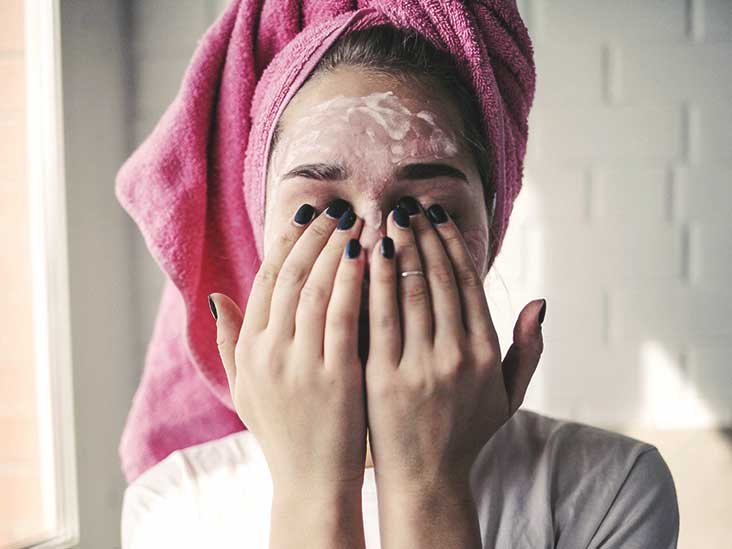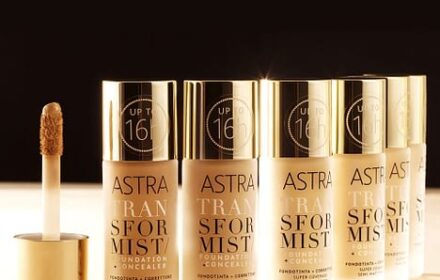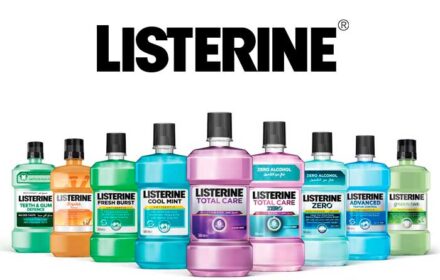We include products we think are useful for our readers. If you buy through links on this page, we may earn a small commission. Here’s our process.
What does sulfur have to do with acne?
Hearing the word “sulfur” might conjure memories of science class, but it turns out this abundant element is a staple in natural medicine. Thanks to its antimicrobial properties, sulfur has been used for centuries to help treat acne and other skin conditions.
It’s also easily accessible. Sulfur is widely available in over-the-counter (OTC) acne products, as well as some prescription versions.
Keep reading to learn more about this acne-fighting ingredient, including the types of acne it can treat and OTC products you can try at home.
As a topical acne treatment, sulfur works similarly to benzoyl peroxide and salicylic acid. But unlike these other acne-fighting ingredients, sulfur tends to be gentler on your skin.
Sulfur helps dry out the surface of your skin to help absorb excess oil (sebum) that may contribute to acne breakouts. It also dries out dead skin cells to help unclog your pores.
Some products contain sulfur along with other acne-fighting ingredients, such as resorcinol.
Sulfur works best for breakouts that are formed with a combination of dead skin cells and excess sebum. These include milder forms of acne, such as whiteheads and blackheads.
Still, it’s important to bear in mind that results can vary between users. It also might work on some breakouts, but not on others. The first step is to determine what type of acne you have. Then you can talk to your dermatologist about whether sulfur is right for you.
Mild: Whiteheads and blackheads
Classified as noninflammatory, whiteheads and blackheads are the mildest forms of acne. They happen when oil and dead skin cells combine and get stuck in your hair follicles.
If the clogged pore is open at the top, it’s a blackhead. If the clogged pore has a closed top, it’s a whitehead.
Sulfur is one OTC acne treatment that can help with whiteheads and blackheads because it targets the two main elements: dead skin cells and sebum. Salicylic acid can also help this form of acne, but if you have sensitive skin you might try sulfur instead.
Moderate: Papules and pustules
Papules and pustules are a form of moderate inflammatory acne. Both are formed from a breakdown in pore walls, which makes them susceptible to getting clogged. The pores then harden and can become painful.
The main difference between the two is that pustules are larger and have more pus. Pustules also usually have a yellow or white head.
Sulfur isn’t a strong enough treatment for moderate acne. Overall, it’s less effective than other acne ingredients, such as benzoyl peroxide. You might consider another OTC product instead, such as ProActiv Emergency Blemish Relief.
Severe: Nodules and cysts
Severe acne consists of inflammatory nodules and cysts. These develop when your pores become extremely inflamed and irritated. They’re also deeper beneath the skin, which can make them difficult to treat. Severe acne can be painful to the touch, and it can redden and scar over time.
Given the severe nature of nodules and cysts, this form of acne isn’t treatable at home. If you’ve tried benzoyl peroxide and haven’t seen results, sulfur likely won’t work either. You’ll need to seek treatment from a dermatologist.
They may recommend a prescription such as an antibiotic or a vitamin A derivative called isotretinoin (Accutane). Surgery may be needed to remove stubborn cysts.
Scars
If you have a history of acne breakouts, chances are that you might also have a few acne scars. These can range in color and size, but acne scars have one thing in common: They’re difficult to get rid of.
Because sulfur dries up and removes dead skin cells, it could — in theory — reduce the appearance of scars too. However, sulfur shouldn’t be your first line of treatment. For stubborn scars, consider a skin-lightening agent, such as Admire My Skin Ultra-Potent Brightening Serum.
Like other acne ingredients, sulfur has the possibility of causing irritation. However, it’s considered a safer selection for sensitive skin. And when used as a spot treatment, sulfur may also help clear acne breakouts in dry-to-combination skin types.
Sulfur may be gentle enough for sensitive skin, but there’s still a risk for side effects. Excessive dryness and irritation are possible.
When first using sulfur for acne, apply once a day. You can gradually increase the application to two or three times per day once your skin gets used to the product.
Another consideration is the smell. Sulfur traditionally has a “rotten eggs” smell, though most related acne products don’t. Consider testing sulfur products at your local beauty store to make sure they don’t contain any unpleasant scents.
While sulfur is an ingredient in some spot treatments, it’s also available in other daily acne products, such as cleansers and masks. The types of sulfur products you use also dictate the dosage amount. For example, you might apply a lotion twice daily at the maximum, while you could use spot treatments up to three times daily.
Before using any new acne product, be sure to conduct a patch test to see whether you’re sensitive to sulfur or other key ingredients. To conduct a patch test:
- Select a small area of skin away from your face, such as the inside of your arm.
- Apply a small amount of product and wait 24 hours.
- You can apply the product to your face if no side effects occur. But if you develop redness, a rash, or hives, discontinue using the product.
Some popular sulfur-containing acne products include:
As an acne treatment, sulfur is widely available at drug stores and beauty counters. You can even find sulfur products online.
If you don’t see results with OTC sulfur products, ask your dermatologist about prescription-strength versions. These often contain sodium sulfacetamide, another type of acne ingredient.
Above all else, be patient with your sulfur treatment, and monitor your skin for any changes. It may take up to three months before you begin to see results.














